What Color Should You Paint Your Trim?
http://decor-ideas.org 06/05/2015 16:16 Decor Ideas
Whether simple or ornate, interior trim is a finishing touch that often doesn’t get much thought, frequently being left the color it’s always been without consideration of the multitude of beautiful alternatives. Whether you’re thinking fresh white, a bold hue or somewhere in between, here are ways to treat your trim to get the look you want.
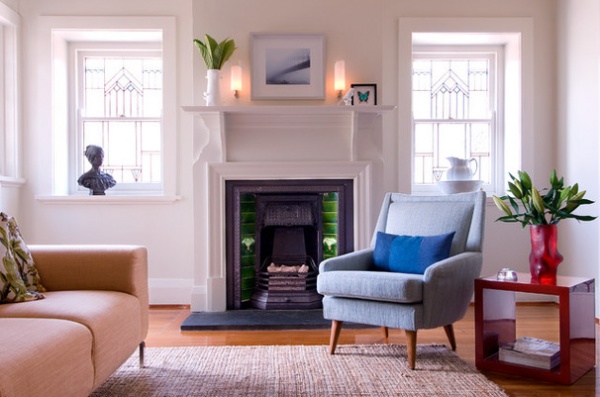
White
Classic white works well for plain trim as well as more elaborate molding styles. It’s great with white walls or colored walls, so it really is the ultimate no-fail option, which is probably partly why it’s such a popular choice.
It can be an excellent way to tie various styles of molding together, and it won’t fight historic details like stained glass, so everything becomes harmonized.
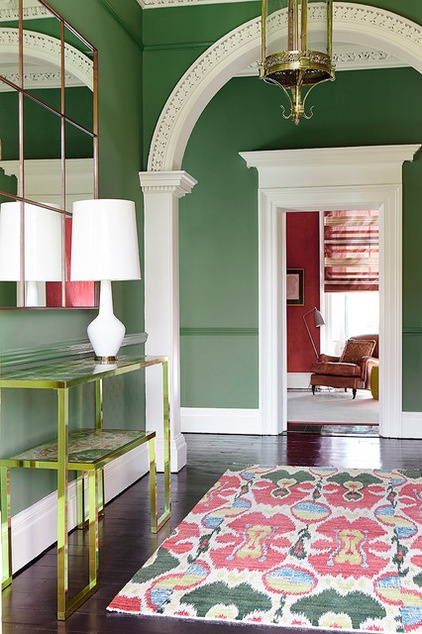
When paired with colorful walls and accents, white trim becomes a bold, fresh focal point, as well as a frame to highlight each room beyond, without clashing with the different colors of each space.
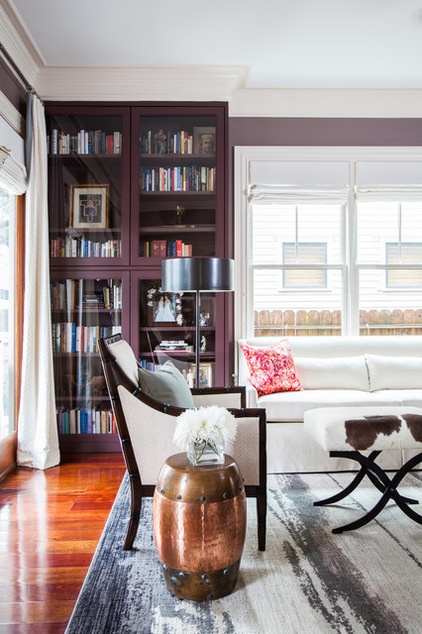
White trim is also great for toning down a strong color by stealing surface area away from the walls. This lilac shade is actually very bold, but it doesn’t feel like it swallows the room paired with deep crown molding and window trim in all white.
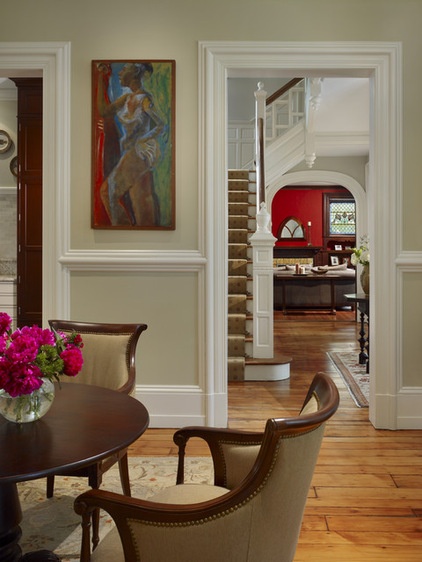
Paired with a neutral wall color, white trim highlights the surrounding undertones so the walls don’t look colorless, while still bringing in a slight modern edge. It’s also a good choice in a space with lots of wood, because it keeps the look contemporary instead of rustic.
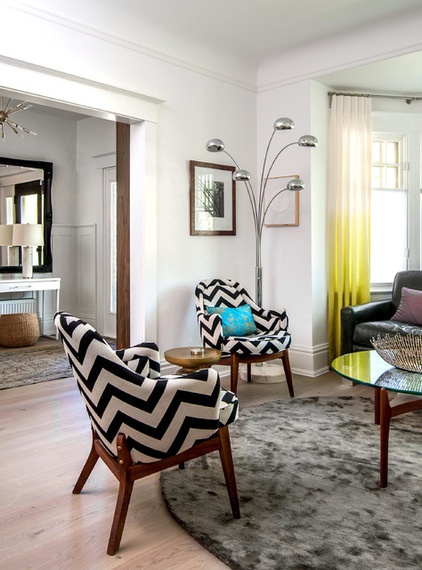
Choose white if:
You want to highlight the subtle undertone of neutral wallsYou want to break up bold walls with a breath of fresh airYou have simple moldings you don’t want to highlightYou want to leave all the attention on dramatic furnishingsYou aren’t sure which other color to pick. It’s hard to go wrong with white trim!
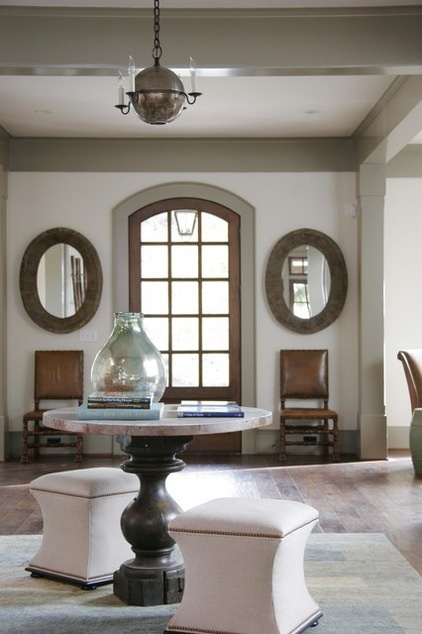
Neutral
When trim is dressed in a midtone neutral shade, it immediately gives it a certain sophisticated, stately appeal. The trim becomes a feature, for sure, but in an understated way.
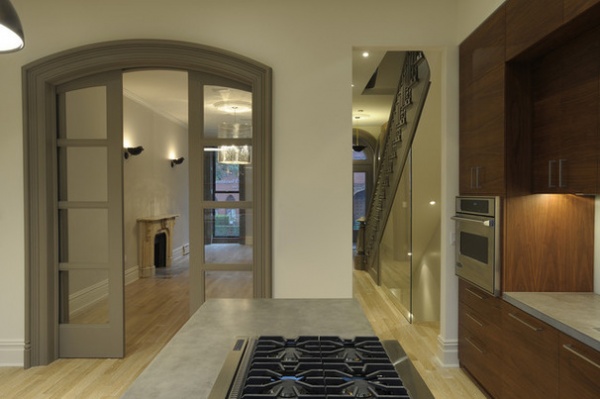
Although the look is somewhat traditional, you can use more modern furnishings to add warmth and character. This kitchen has sleek cabinets and modern appliances but still feels homey instead of ultramodern. That’s in large part due to the warm gray trim.
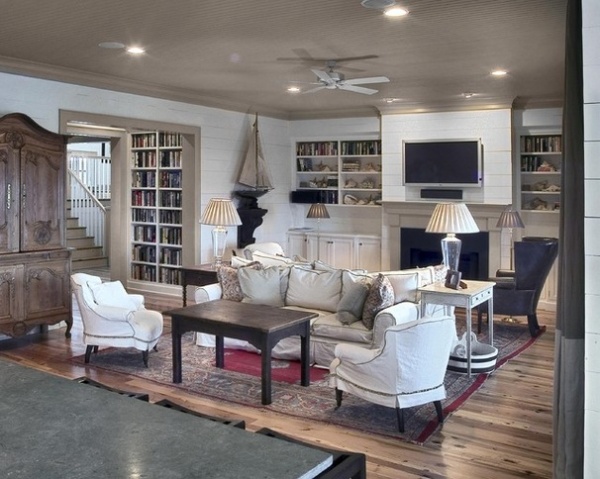
Neutral trim works especially well with a colored ceiling, so consider using the same color overhead in a room where you want a more intimate feel, such as a sitting room or dining space.
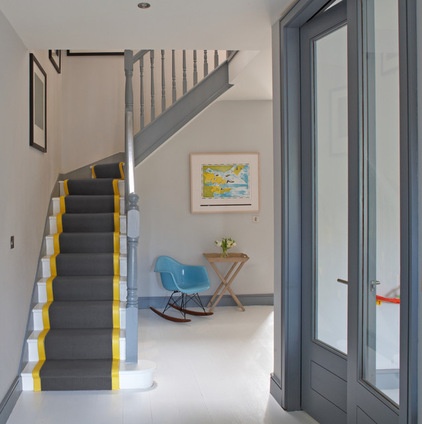
Choose neutral if:
You love a transitional look (one that balances traditional and modern elements)You want an authentic heritage feel in an older homeYou want to highlight doors or windows for an architectural look without touching fresh white walls
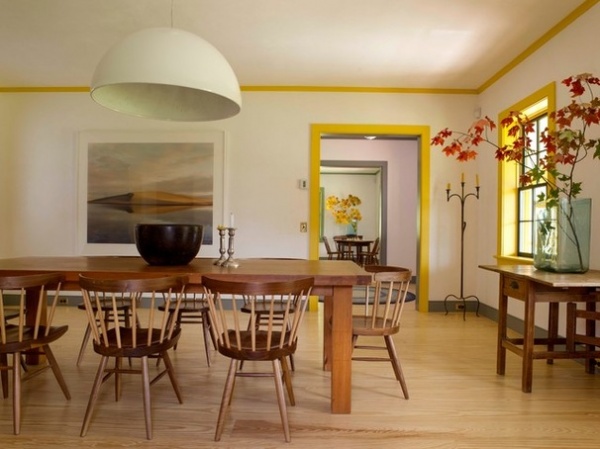
Bold Colors
Bold, colorful trim can be either part of a wild, eclectic look or actually a very livable element in a more sedate home. Because trim usually has a relatively small surface area, painting it a fun hue like lemon, pink or sky blue adds a pop of color (and definite personality) without adding as much drama as a full wall treatment.
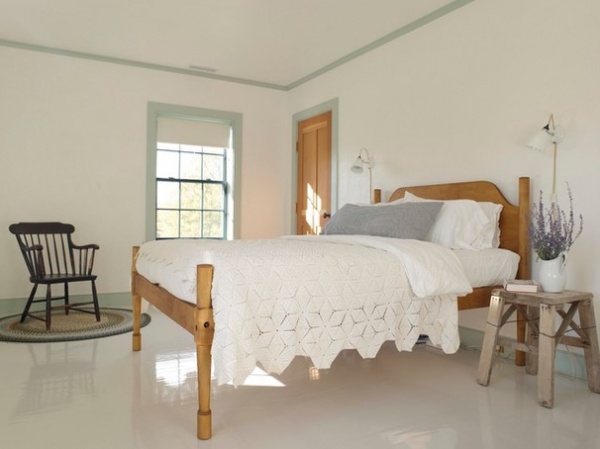
Pastel trim doesn’t even feel edgy; rather, as in this case, it creates a romantic feeling that suits a humble cottage-style or dreamy bedroom.
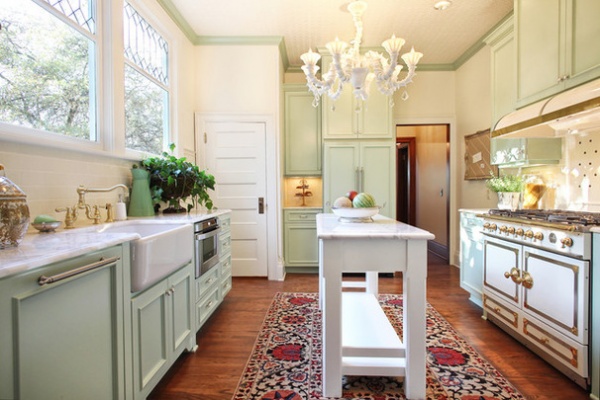
Choose a bold color if:
You want to add a new hue without going all-in on the wallsYou want a quirky, eclectic or unique lookYou have colorful cabinets in a kitchen and want to tie the room together
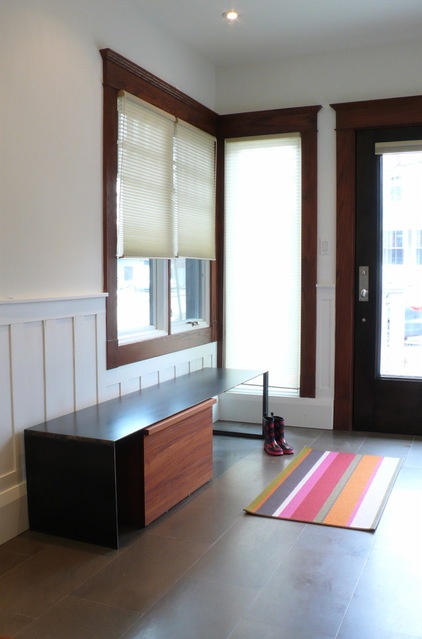
Wood
Wood trim can be anything from rustic to modern, depending on the tone and finish of the wood. Either way, it adds a deeper sense of texture, which can make a room feel welcoming even without much else in the way of decorative elements.
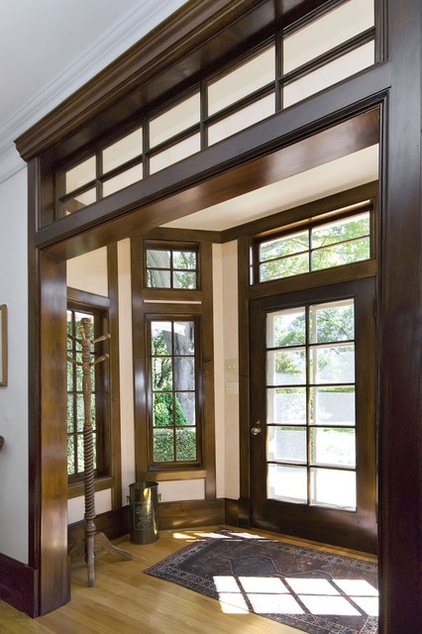
Wood trim is often stained to match the flooring, but it can vary in tone a bit and still coordinate beautifully, as woods naturally mix and match. Just don’t mix more than three wood tones if you want to stay out of rustic territory.
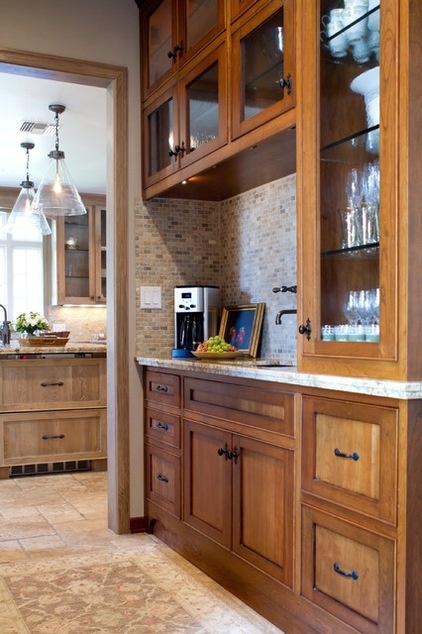
Matching wood kitchen cabinets to wood trim creates the sense that this natural element is integrated in the whole space, creating a sense of consistency and some rustic charm.
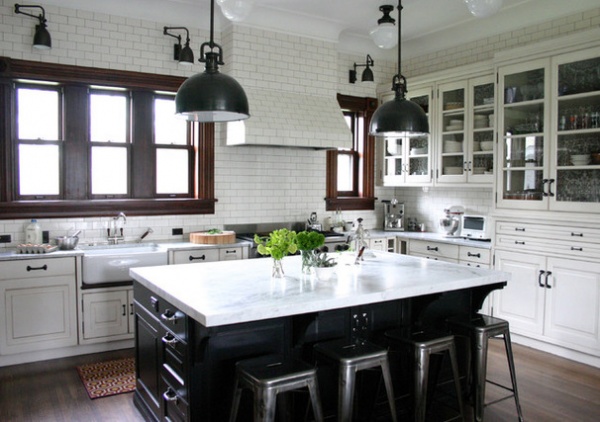
A little wood trim on a window is excellent for warming up a space that’s otherwise cold, such as a white kitchen or bathroom (especially if you don’t want to add window drapery). Choose a deep stain to suit a contemporary space, and leave other trim white.
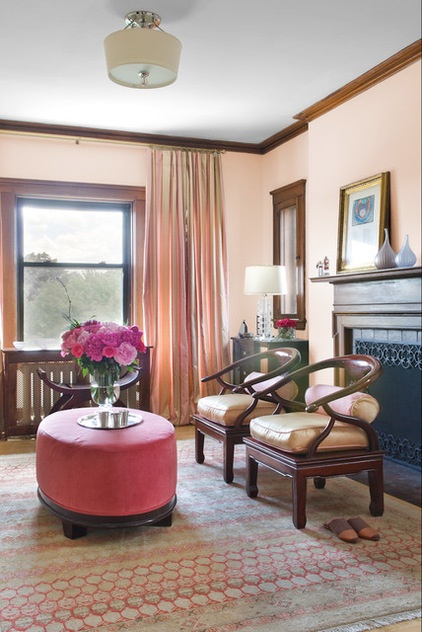
Wood is also great with wall colors that already add warmth, such as a soft pink. Both have red undertones, so the lack of contrast makes both elements feel like they fit in peacefully.
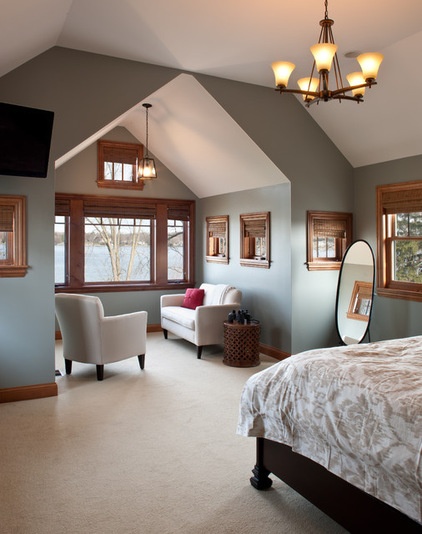
Choose wood if:
It’s already there. Most trim is MDF or the like, so celebrate real wood if you have it!You want to add an element of warm wood but don’t want wood floorsYour space needs a little extra textureYou love a rustic look or need a masculine counterpoint to feminine details
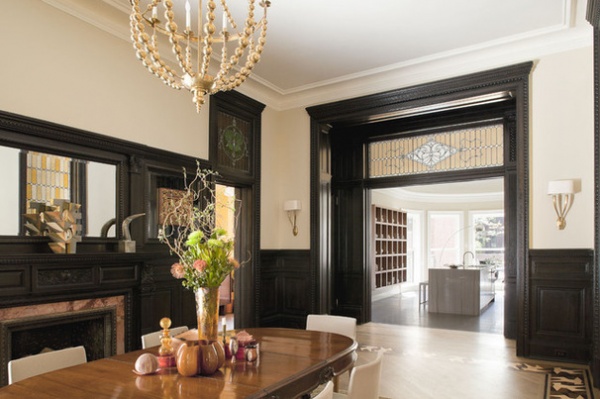
Black
Black trim is definitely statement making, yet it’s timeless, so unlike with other bold colors, you don’t have to worry that this dramatic choice will grow dated quickly.
Even more so than white trim, black trim frames each doorway or window like a picture, for instant high-fashion appeal.
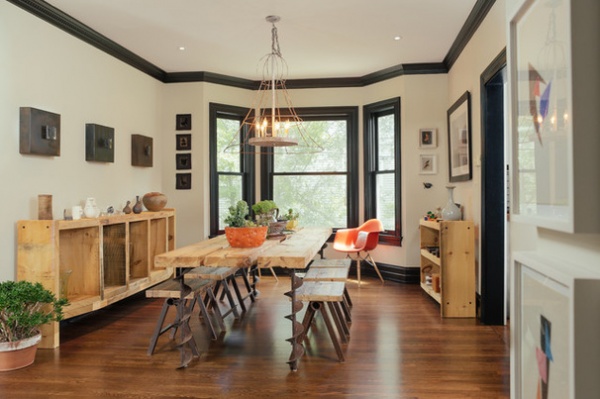
Black trim is at its most classic and livable when paired with simple finishes like a wood floor and pale walls. It will fight other elements for attention, so you might as well let it be the star.
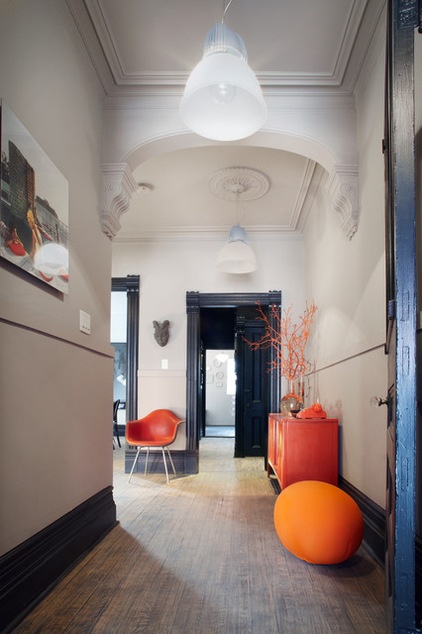
As stark as black may be, it doesn’t have to be all or nothing. Painting just your lower trim black (baseboards and door frames), with the crown molding white, anchors the room while letting the ceiling float away for an airy appeal.
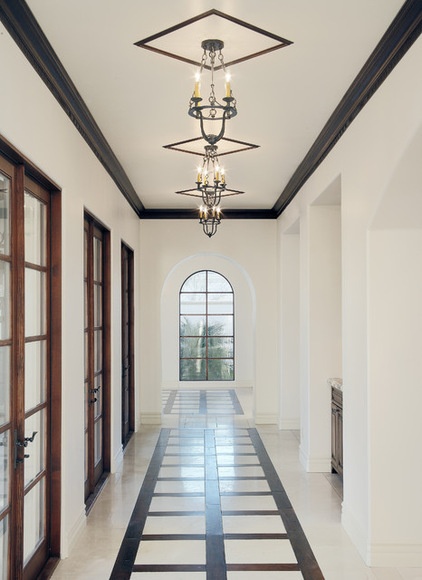
Alternately, painting just the crown molding black frames the ceiling, highlighting details like beautiful lighting, medallions and other features. This tactic works well with dark wood doors, as both have a deep richness, making the doors less stark to keep the look balanced instead of ultramodern.
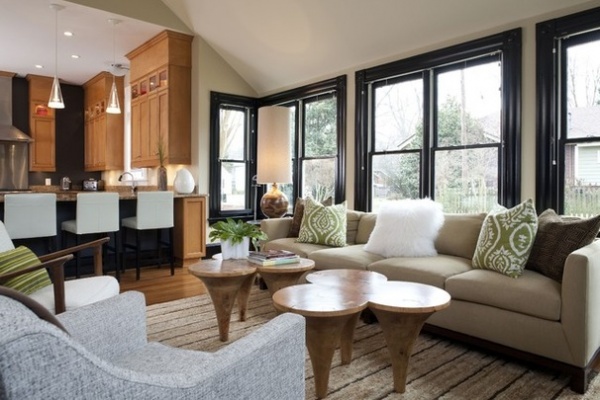
Choose black if:
You want a dramatic look that’s classic and sophisticatedYou want to contrast wood floors or cabinetsYour neutral scheme needs some edge to bring it to lifeYour beautiful views demand to be framed like portraits
Read more reasons to paint your trim black
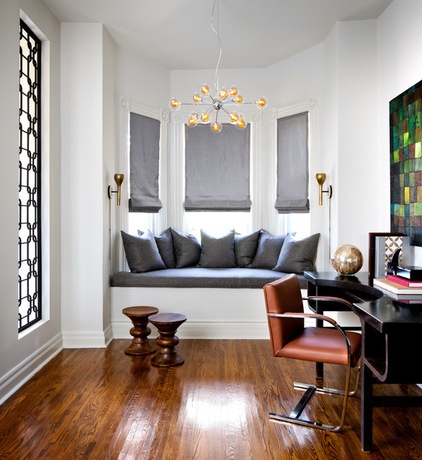
Gloss
Treating trim with a slight gloss finish is a great way to subtly highlight beautiful moldings while maintaining a clean palette for effortless-looking designer appeal. I often use a consistent paint color for walls, ceiling and trim, using a matte finish for walls and a satin finish for trim, so a hint of light bounces off the trim’s curves to subconsciously draw the eye.
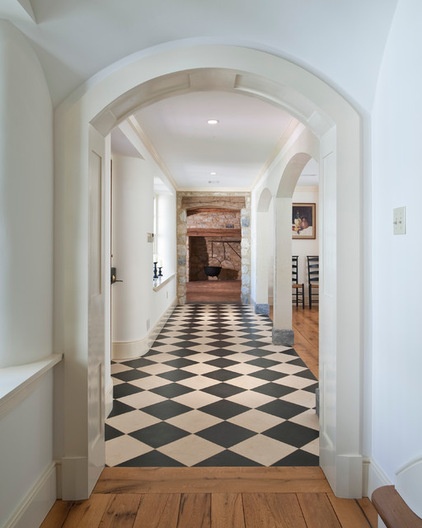
You can also cheat the look further with a slight off-white that almost blends into the wall but stands out just enough to catch your eye when you look at the trim, without the trim’s fighting other more attention-grabbing features.
Trim is often more likely to be touched or leaned on than the walls themselves, so using an easy-to-clean paint finish is practical too.
More:
How to Bring Out Your Home’s Character With Trim
Read more about trim
Related Articles Recommended












